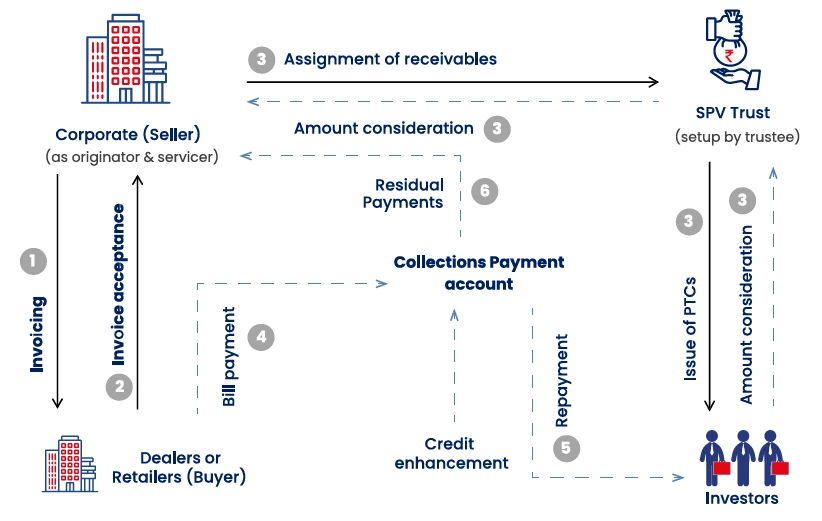Credit Risk Assessment
Global Volatility is Stress-Testing Corporate Vigilance. How can Organizations Strengthen Compliance?

Earlier this month, three global luxury majors Gucci, Chloe, and Loewe were in the news for all the wrong reasons. The European Union’s anti-trust watchdog conducted a surprise investigation of these three brands that revealed that they restricted the ability of their retailers to set their own retail prices online and in stores. This was in breach of the European Union’s competition rules and Gucci, Chloe, and Loewe were collectively fined more than €157 million (approx. Rs 1,421 crore) for imposing illegal price curbs on their products.
In today’s interdependent and interconnected business environment, compliance failures, or even the perception of non-compliance, can escalate into operational paralysis, financial consequences, and reputational fallout in a matter of hours.
It is therefore no surprise that in 2025, organizational compliance has been elevated from a regulatory function to a frontline defence against existential risk.
A World of Shifting Ground
The IMF’s Global Financial Stability Report (October 2025) warns that “beneath the calm in financial markets, shifting ground poses new challenges to stability,” highlighting persistent vulnerabilities in foreign exchange markets and growing interlinkages between banks and non-bank intermediaries. Trade fragmentation, sanctions, and regulatory divergence are reshaping the global order, and with it, the boundaries of compliance.
Compliance risk today extends far beyond AML or KYC obligations. Volatility now emerges from multiple vectors: Sanctions, ESG, AI Ethics, Data Privacy, and Supply Chain Due Diligence. The European Union’s Corporate Sustainability Due Diligence Directive (CSDDD) and similar frameworks in other regions mean that a supplier’s non-compliance can become a company’s liability. Hence, it is imperative for businesses to track not only financial health but also ethical and environmental conduct across rapidly evolving jurisdictions.
Supply Chains Under Stress
The past few years have exposed the fragility of even the most established supply networks. Disruptions from pandemics, conflict, tariffs, or political shifts ripple through entire industries.
October 2025 GEP Global Supply Chain Volatility Index indicates that global supply chains remain underutilized, though Asia – led by China has rebounded to its busiest level since mid-2022. In contrast, North American manufacturers are scaling back due to tariff-related disruptions and cautious sentiment.
Such regional imbalances highlight a broader trend: supply chains are more exposed to regulatory, logistical, and geopolitical shocks than at any time in recent memory. For example, dependencies on critical minerals like cobalt and nickel, concentrated in politically sensitive countries, could create compliance and operational bottlenecks, especially as governments tighten ESG oversight and increase non-tariff barriers.For compliance leaders, that means risk visibility must extend far beyond first-tier suppliers. Companies require continuous monitoring of suppliers and customers to detect hidden ownership changes, sanctions exposure, or deteriorating financials before they spiral into crises.
Why Volatility Exposes Weaknesses in Compliance
Fraud evolves faster than risk monitoring models. Traditional, rule-based compliance systems rely on historical behavior to flag anomalies. However, when market conditions or customer patterns change overnight, these static thresholds trigger false positives or, worse, miss emerging risks entirely.
Fraud losses now average 7.7% of annual revenues globally, revealing how criminals exploit real-time payments and digital onboarding gaps. The number of data breaches fell slightly in 2024, but they were 34% more severe, compromising 640 million consumer records, a reminder that the fallout from one breach can ripple through compliance systems for years.
Data fragility undermines visibility: Fragmented or inconsistent entity data means compliance teams may screen the same counterparty multiple times or miss them altogether. In times of volatility, this data fragility translates into real regulatory exposure. However, Secretariat’s 2025 findings show that effective Master Data Management (MDM) materially improves data accuracy and efficiency, now critical to compliance outcomes. Solutions like Rubix MDM centralize and update counterparty data continuously, allowing teams to take confident decisions even in volatile conditions.
Identity has become the new battleground: Synthetic IDs and digital impersonation tactics are challenging even sophisticated verification systems. The weakest link is often at onboarding, where rapid growth pressures collide with insufficient due diligence.
Regulatory expectations are rising: Regulators now expect organizations to demonstrate how they detect, escalate, and remediate risks in real time, not merely state that they have policies in place. PwC’s Global Compliance Study 2025 found that nearly 90% of compliance leaders say expanding regulatory and operational demands are hindering their ability to maintain the IT systems and data that power automated monitoring. However, these regulations are here to stay, with many regulators, such as the Reserve Bank of India (RBI) and the Securities and Exchange Board of India (SEBI), requiring real-time surveillance and not just periodic reviews.
From Reactive to Predictive Vigilance
Early Warning Systems (EWS) are at the heart of the shift from reactive to predictive vigilance. By integrating financial signals, regulatory updates, litigation alerts, and behavioural patterns, EWS platforms like Rubix EWS help compliance teams detect risk signals before they escalate into costly crises. This is essential because compliance today is as much about prevention as it is about oversight.
Read Also – Building a Real-Time Credit Risk Engine for Large Corporates with Deep Supply Chains
Turning Compliance into Resilience
The cost of compliance failures continues to rise, both in terms of fines and reputational and operational damage. Regulatory penalties are climbing sharply, while reputational fallout from ESG breaches or data misuse can erode stakeholder trust in days.
Most forward-looking organizations are reframing compliance as a resilience function, one that sustains trust, ensures business continuity, and protects stakeholder value amid volatility. This shift from static compliance to continuous, data-driven vigilance requires advanced analytics and timely intelligence.
Here’s where integrated frameworks, combining Compliance Monitoring, Fraud and Identity Solutions, Early Warning Systems (EWS), and Master Data Management (MDM), deliver measurable impact.
Vigilance is the New Stability
The world’s risk map is being redrawn almost daily. The organizations that endure will be those that treat compliance not as a cost centre but as a strategic compass, powered by reliable data, intelligent monitoring, and a culture of vigilance.







